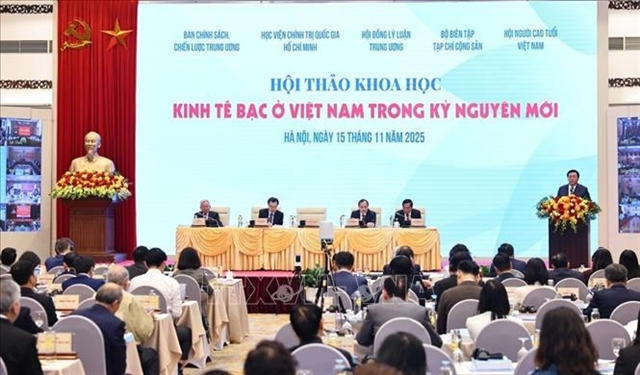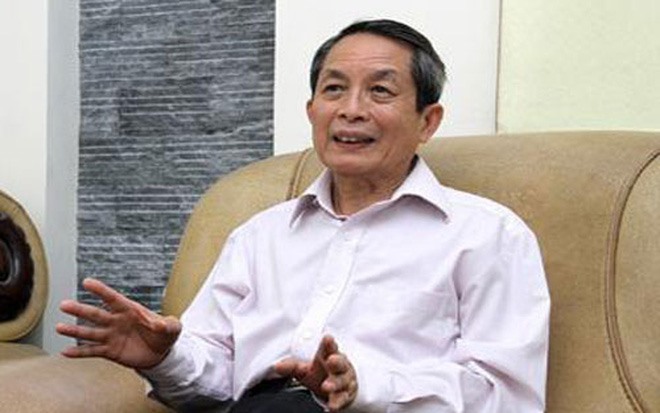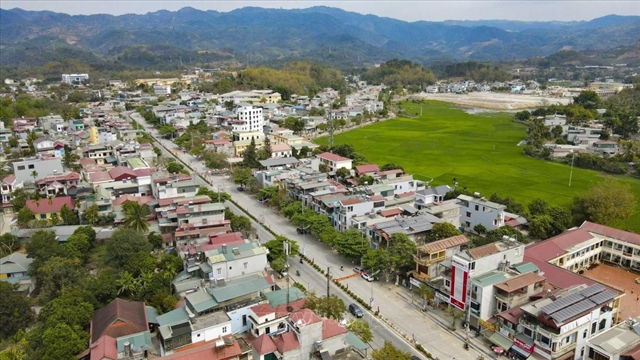 Opinion
Opinion

Professor Trần Đình Long, chairman of Việt Nam Plant Seed Association spoke with Khoa học&Đời sống (Science&Life) newspaper about the building of hi-tech agriculture in Việt Nam and difficulties the country will be likely to face when applying the model.
 |
Professor Trần Đình Long, Chairman of Việt Nam Plant Varieties Association tells the Khoa học & Đời sống (Science & Life) newspaper that hi-tech agriculture should match Vietnamese conditions to ensure sustainable growth.
Việt Nam is determined to promote hi-tech agriculture in the coming years. What does this term mean, exactly?
Hi-tech agriculture is a modern farming method that reduces the cost of inputs and increases the value of agricultural products while making them safe and environmentally-friendly. The key to successful hi-tech agriculture is that it reaps economies of scale, uses modern technology and has a stable market. A hi-tech agriculture model must meet criteria in four areas: technology, economy, society and environment.
First, it must use modern technology to create agricultural products of superior quality and value. Then, it should be economically more efficient than old methods, hence moer competitive in the market. Third, it should suit the climate, weather and soil conditions of the different regions in the country, and be accepted and applied by the community. Fourth, it should ensure stable production without negative impacts on biodiversity, the environment, the ecosystem and human health.
Many people assume hi-tech agriculture is the use of greenhouses or net houses managed by computers. Such models have been applied in the country, but the price of produce is very high.
Greenhouses, net houses, information technology, and automation systems are indispensable to hi-tech agriculture, but, as I noted earlier, other criteria have to be met.
For example, if we can use computing technology to produce lettuce and tomatoes in greenhouses in Hà Nội, but the high prices will not be welcomed by consumers. Thus, we cannot ignore market demand when implementing hi-tech agriculture.
Agricultural methods in Israel, Singapore and Japan have been welcomed and applauded although they don’t have favorable land and climate conditions like Việt Nam. So what’s the difference between hi-tech agriculture in Việt Nam and other countries?
It’s obvious that the hi-tech agriculture model or models applicable in Viet Nam will have to be different from other countries, given its unique tropical and subtropical climate, red basalt and alluvial soil in the Red River Delta. We have 12 agricultural, forestry and seafood products that are among the top export revenue earners in the world. Therefore, it is necessary to select technology that suits the particular characteristics of the country and to ensure that the produce has a stable consumption market.
As you noted, some of Việt Nam’s agricultural products are leading export earners, but the price is always lower than that of other countries, and people say the reason is lower quality. What do you feel is the biggest problem with Vietnamese agriculture?
The biggest problems facing Vietnamese agriculture today is the need to increase product value, farmers’ incomes, sustainable development of the sector, climate change adaptation and the lack of brand identification for our products.
To address these problems, we need to shift from exporting raw material to processed products that will add significant value.
So hi-tech agriculture can be a solution. What are the measures that the agricultural sector should take?
I think the production scale must be expanded to suit hi-tech agriculture. It’s necessary to allow land accumulation like the model in Hà Nam Province. So far, the province has accumulated 300 hectares of land and has made VNĐ200 billion ($8.7 million) in rental payments to land owners so as to develop hi-tech agriculture.
We need to determine the agricultural production unit – a co-operative or an enterprise – that will be used. Management of the sector and human resource development will be key factors.
Currently, we have the models of organic agriculture and modern agriculture. However, these models must be checked to see if they meet the criteria mentioned above before expanding them.
The Government has announced a VNĐ100 trillion (US$4.4 billion) package for developing hi-tech agriculture. This is an unprecedented advantage. But we cannot take advantage of it without skilled human resources – in management, in science and technology, and in production. The human factor, especially leadership, is extremely important. Under large-scale models, farmers will become agricultural workers and shareholders of agricultural enterprises. To become agricultural workers, they must self-train and be trained, too. – VNS




